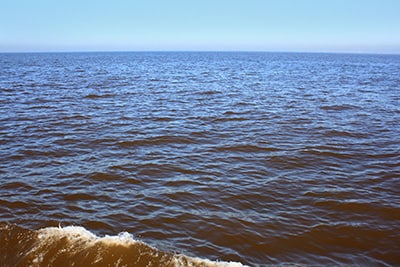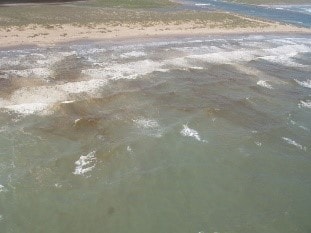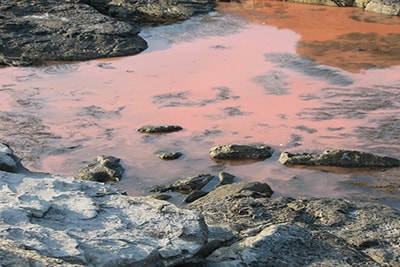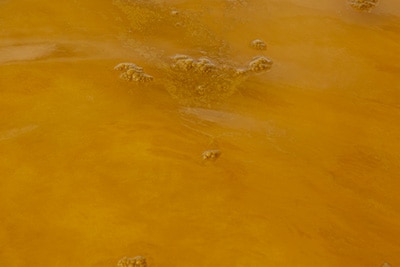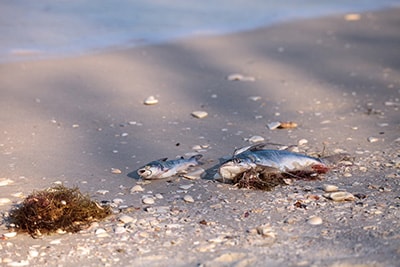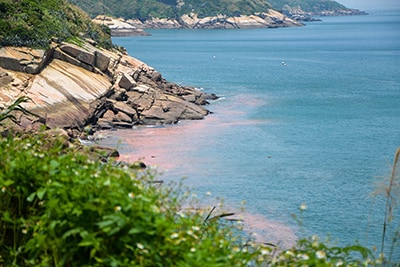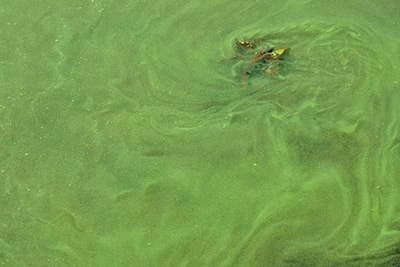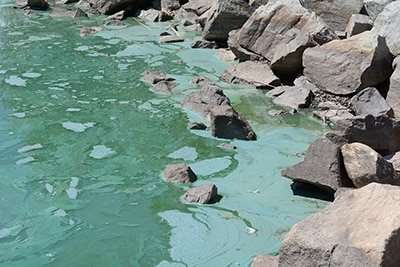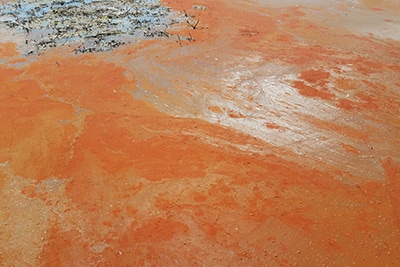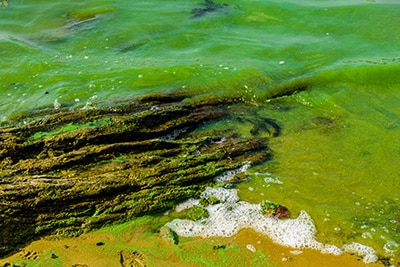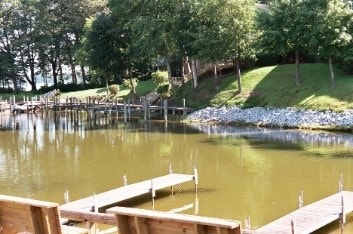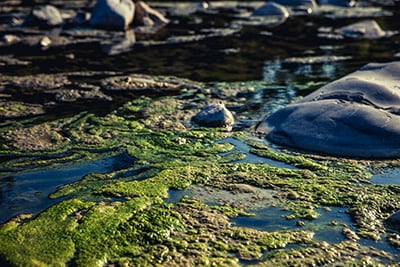General Information
Algae and cyanobacteria (also called blue-green algae) can sometimes cause harm to people, animals, and the environment. Learn more below.
Algae and cyanobacteria can form blooms
Algae and cyanobacteria are simple organisms that live in the water. Algae and cyanobacteria can rapidly grow out of control, or “bloom,” when water is warm, slow-moving, and full of nutrients.
Blooms can occur in fresh water, marine (salt) water, and brackish (a mixture of fresh and salt) water around the world. Blooms can look like foam, scum, mats, or paint on the surface of the water. A bloom can change the color of the water to green, blue, brown, red, or another color.
Photos: Blooms of algae in salt water
Photos: Blooms of cyanobacteria (blue-green algae) in fresh water
Some blooms can be harmful
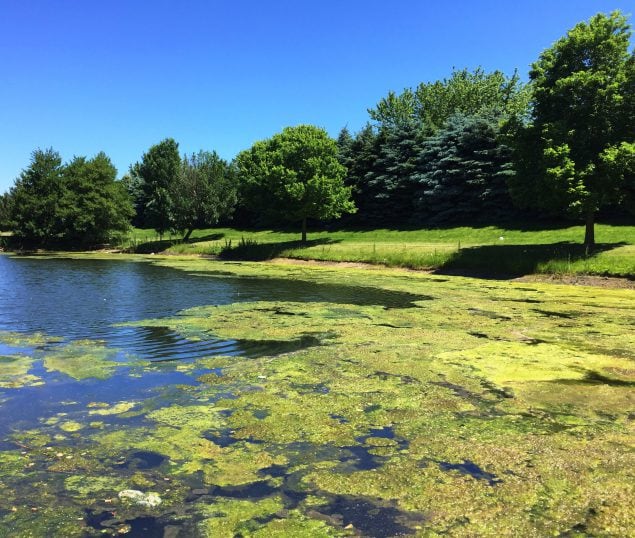
Blooms can be harmful to people, animals, or the environment if they
- Produce toxins (poisons);
- Become too dense;
- Use up the oxygen in the water; or
- Release harmful gases as they decay.
People and animals (including pets, livestock, and wildlife) can get sick when they have contact with water or food that contains certain types of algae, cyanobacteria, or their toxins.
People and animals can get sick if they:
- Swim, wade, or play in or near contaminated water;
- Eat contaminated fish or shellfish; or
- Use contaminated drinking water.
There are many types of algal and cyanobacterial toxins. The signs and symptoms they can cause in people and animals are not all the same. Blooms in fresh water can cause different symptoms than blooms in marine (salt) water.
Symptoms depend on:
- How a person or animal was exposed (came into contact with algae, cyanobacteria, or their toxins)
- How long they were exposed
- Which type of toxin was present
- How much toxin was present
Toxins from algae and cyanobacteria can make people and animals very sick or even cause death. Animals can die within hours to days of swallowing toxins.
It is important to note that not all algae and cyanobacteria produce toxins, and not all blooms are harmful. Certain types of algae and cyanobacteria are eaten or used in dietary supplements.
Learn more about illnesses and symptoms caused by harmful algae or cyanobacteria in fresh water, such as lakes, and salt water, such as oceans and bays.
Prevent illness
You can take steps to avoid getting sick from algae, cyanobacteria, and the toxins they make. For example:
- If you see a bloom, stay out of the water and keep your pets out of the water. Do not fish, swim, boat, or play water sports. You cannot tell if a bloom is harmful by looking at it, so it is best to use caution and stay away.
- Do not go into or play in water that:
- Smells bad
- Looks discolored
- Has foam, scum, algal mats, or paint-like streaks on the surface
- Has dead fish or other animals washed up on its shore or beach
- Check for and follow local shellfish and fish advisories before eating any shellfish or fish you collect.
- If you are notified of a bloom in a nearby body of water or in your public drinking water supply, follow local or state guidance to reduce your chances of getting sick.
Learn more about how to protect yourself and your pets.
